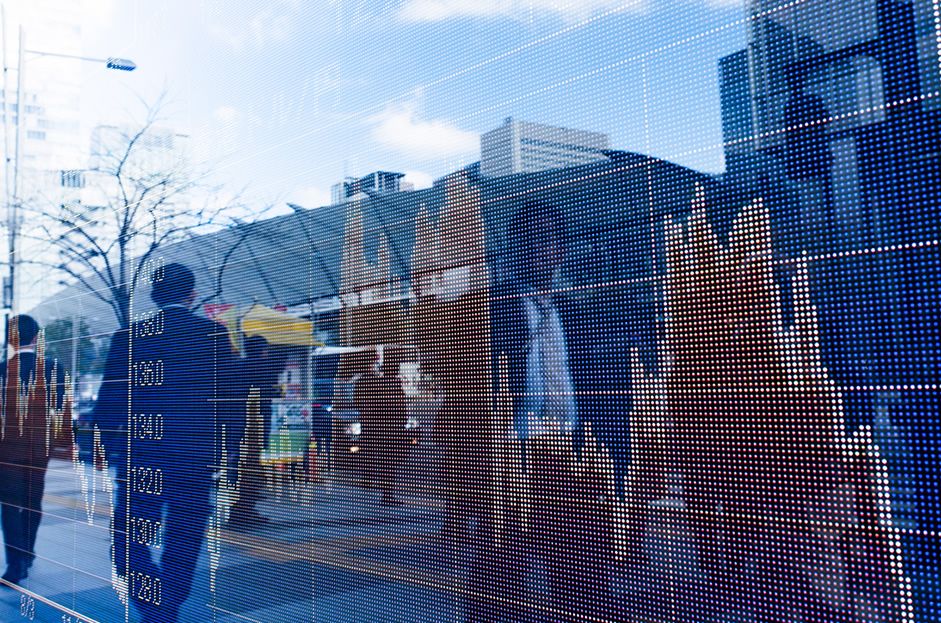Market Caution Ahead of U.S. Inflation Release

Image © Adobe Images
A dose of caution has been injected into financial markets as investors brace for the latest reading on U.S. inflation.
On Wall Street stocks lost some of the earlier ground won, trading has been pretty mixed in Asia and a similar picture is set to emerge as exchanges open in Europe.
Investors are keen to see more evidence that hot prices are losing steam but are still worried that the CPI numbers out later will indicate that the cooling process is proving slow going
Markets are super-sensitive to any indication that the Fed will stay aggressive in its inflation-fighting stance, and the worry is that core inflation, which excludes volatile food and energy costs, may be proving harder to bring down more quickly, which could harden policymakers’ resolve.
Another 0.25% hike is already expected in May, and a stronger-than-expected core inflation reading could tip the balance in forecasts towards yet another rate rise in June, which may set off a fresh round of equity selling, particularly for companies in the sensitive tech sector.
Key CPI numbers to watch:
» CPI year-on-year expected at 5.1% in March, down on February's 6.0%
» Month-on-month CPI expected at 0.2%, down on February's 0.4%
» Core CPI year-on-year expected at 5.6%, up on February's 5.5%
» Core CPI month-on-month expected at 0.4%, down on February's 0.5%
But there are still hopes that the pause button may still be pressed if policymakers assess that the lag effect of rate rises will do the job and bring down the price spiral.
All this will be food for thought for bank shareholders, who had been enjoying the spoils of higher net income margins but are assessing the potential for fresh trouble on the horizon as the pressure of high interest rates take a toll on the wider economy.
Financial stocks including Citigroup, JP Morgan and Wells Fargo are among the first to report on Friday as the earnings season gets underway.
The picture may on the face of it look rosier thanks to volatility in stock markets which should lift trading revenues, and with consumers and companies still showing resilience and appetite for borrowing.
However, investors will be homing in on the outlook and there are likely to be signs in these reports that margins will face a squeeze in the months to come.
The big focus will be on the extent of deposit flight, as clients withdraw money to invest in potentially higher-yielding opportunities, like money market funds.
It is highly likely we are past the net income margin peak, and that banks will be forced to pass on the higher rates to customers, to stem the flow of deposits, which will limit future earnings potential from loan books.
Although the Silicon Valley Bank collapse and its repercussions have sparked a rush of new custom with transfers from smaller banks, in a flight to safety, it’s not likely to have offset the deposit outflow as clients seek higher returns elsewhere.
So, taking more defensive action by attracting more deposits may be the priority from management teams which may eat into net income margins.
Another decline in US crude stockpiles has helped oil prices hang onto gains, with levels at the key storage hub in Oklahoma shrinking by 1.4 million barrels last week.
But there is also upwards pressure coming from supply-side concerns, with the effects of the announcement last week from OPEC+ countries of a reduction in output to bolster prices still lingering and exports from Kurdistan through a key pipeline remain suspended.
Elon Musk has gone on the defensive about his strategy at Twitter, saying deep cuts to the workforce were necessary as the company had only months to live.
The company has slimmed down dramatically from around 8,000 employees to just 1,500, which has clearly been a painful process. This drastic reduction in staff is likely to reignite the debate about the lack of resources to effectively police the platform.
In a Twitter Spaces chat Mr Musk headed off these concerns by stressing that it is his mission to be as truthful as possible, but there is still a conundrum to be dealt with.
Musk is still trying to coax back advertisers and encourage companies to pay for verified blue ticks, while facing accusations that it has become more toxic, and a space where firms might not want to advertise their wares.
Musk says that they are returning, and the platform is now roughly breaking even, but given the Twitter purchase was such an expensive gamble, it’s clear his rollercoaster ride is still ongoing.
